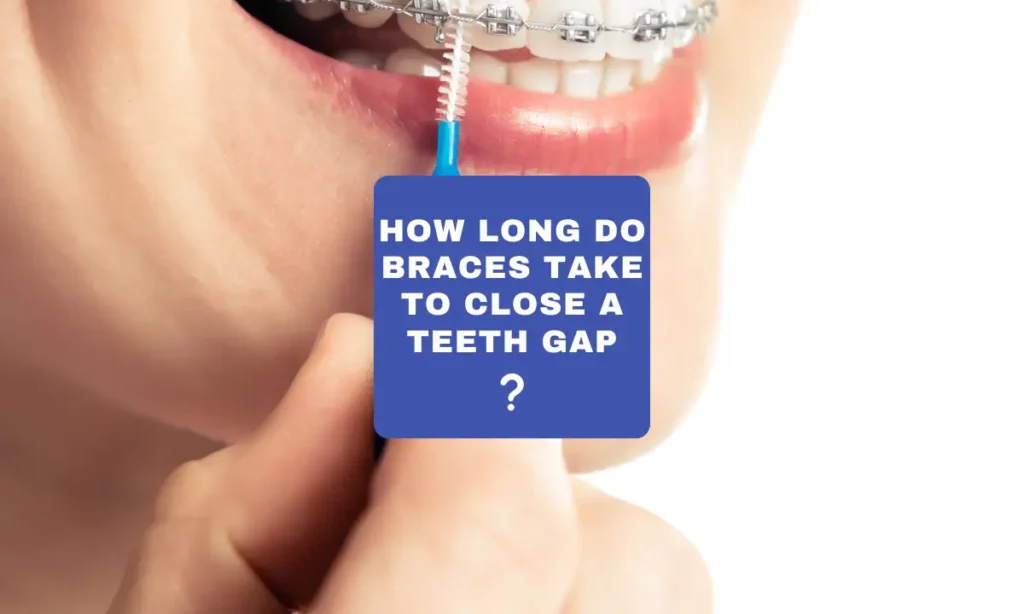A gap between your teeth, especially the front ones can be a unique feature. Moreover, some people even embrace it. However, for many, it’s something they’d rather correct. So, whether it’s due to self-confidence, speech issues, or simply a desire for a more even smile. Here, closing the teeth gap is reportedly a common reason. Furthermore, people choose to get braces. Further, once you’ve made that decision. Then, the next big question is: How Long Do Braces Take to Close a Teeth Gap? Here, the answer isn’t the same for everyone. However, it’s a clear, realistic breakdown to help set your expectations.
Overview: How Long Do Braces Take to Close a Teeth Gap
Before we dive into timelines. Here, it’s helpful to understand why that gap exists in the first place. As per the reports, dentists refer to this space between the teeth as a diastema. Herein are some common reasons it can occur:
- Genetics – Sometimes, gaps unfortunately just run in the family.
- Mismatch between jaw and tooth size – If your jaw is a bit too large. Or your teeth are relatively small. Then, gaps can form.
- Tongue thrusting – Pressing the tongue against your teeth. Especially while swallowing can push teeth apart over time.
- Thumb sucking – A habit in early childhood that can continue affecting the teeth alignment. Especially if it goes on too long.
- Missing teeth or gum disease – Moreover, these can cause neighboring teeth to drift and leave spaces behind.
Braces are reportedly a time-tested way to not only close these gaps. However, it also improves your overall dental alignment and bite.
How Braces Close the Gap
According to the reports, braces work by applying gentleness. Later, consistent pressure to your teeth using brackets and wires. These are furthermore adjusted regularly by your orthodontist. So, it can gradually move your teeth into their ideal positions. When it comes to closing a gap. Here, the goal is to bring the teeth on either side. Especially of the space closer together. As your teeth move, the surrounding bone and gum tissue adapt as well. As a result, it turns into a more aligned, healthier smile.
So, How Long Does It Actually Take?
On average, it reportedly takes between 6 months and 2 years. So, it can close a gap with braces. Why such a wide range? As several factors come into play:
Size of the Gap
- Small gaps (1–2 mm): Often closed in 6–9 months.
- Moderate gaps (2–4 mm): Typically take around 12–18 months.
- Larger gaps (5 mm or more): May require 18–24 months, especially if multiple gaps are involved.
Age
As per the reports, younger patients often see faster results. Moreover, their bones are still growing. Hence, it makes it easier to move teeth. Adults can further achieve great outcomes. However, it may take a bit longer.
Type of Braces You Use
- Metal braces: Here, the most effective and typically the fastest.
- Ceramic braces: Moreover, less visible. However, it may take slightly longer to move teeth.
- Clear aligners: Great for small-to-medium gaps. However, they need to be worn constantly (20–22 hours a day) to work well.
- Lingual braces: Positioned behind the teeth. Also, it can be trickier to adjust. Sometimes, it slows down progress a bit.
Your Commitment Counts
Are you showing up for your appointments? Following your orthodontist’s advice? Not popping off brackets on hard candy? Good habits can keep your treatment on schedule—or even speed it up a little.
A Quick Timeline Snapshot
To help you picture it better, here’s a rough breakdown:
- First 1–3 months: Your teeth start aligning, and you may see small shifts.
- 3–9 months: For smaller gaps, you might see them close during this phase.
- 9–18 months: This is when most moderate to large gaps close.
- 18–24+ months: If your case is complex, this time is used for fine-tuning and perfecting your bite.
What Happens After the Gap Closes?
Once your braces come off. Then, your orthodontist will likely fit you with a retainer. Here, it’s a clear or wire appliance you wear. So, it can keep your teeth in their new position. Moreover, it’s a small commitment compared to wearing braces. However, it’s super important. Without it, your teeth could slowly shift back. As a result, the gap might return.
According to the reports, some people wear their retainer full-time. Especially for a few months, then only at night. Here, your dentist will tell you what’s best for your situation.
Are There Faster Options Than Braces?
Heee, if you’re hoping to fix a small gap without a full set of braces. Then, there are a few alternatives, depending on your case:
- Dental bonding: A dentist reportedly adds a tooth-colored resin to each side of the gap. Later, it closes the space. Therefore, it’s quick and painless, but mostly cosmetic.
- Veneers: Thin shells placed on the front of your teeth. Again, more of a visual fix than a structural one.
- Clear aligners: According to the reviews, great for small to moderate gaps. However, not ideal for every case.
- Frenectomy: If a thick gum band (called a frenulum) is causing the gap between your front teeth. Then, a simple procedure to remove it might be needed. Especially before braces or aligners are effective.
Conclusion
Fixing a teeth gap with braces takes patience. However, it’s a solid investment in your smile, confidence, and dental health. For most people, expect around 6 to 24 months. They are reportedly depending on the size of the gap and your individual needs. Moreover, the best way to get a more accurate timeline? Book a consultation with an orthodontist. Further, ask all your questions that they’re there to help.
Remember, every smile has a story. If yours includes a gap today, it doesn’t have to stay that way forever.
Also read:- How to Reduce Gap Between Teeth Naturally at Home – 2025 Guide



